
Talking in the 19th Hole
Driver. Amateur players miss a high percentage of their putts that break on the low side, with the lowest elevation, also known as the amateur side. This means that putts that break from right to left are missed on the left side of the hole, and vice versa.
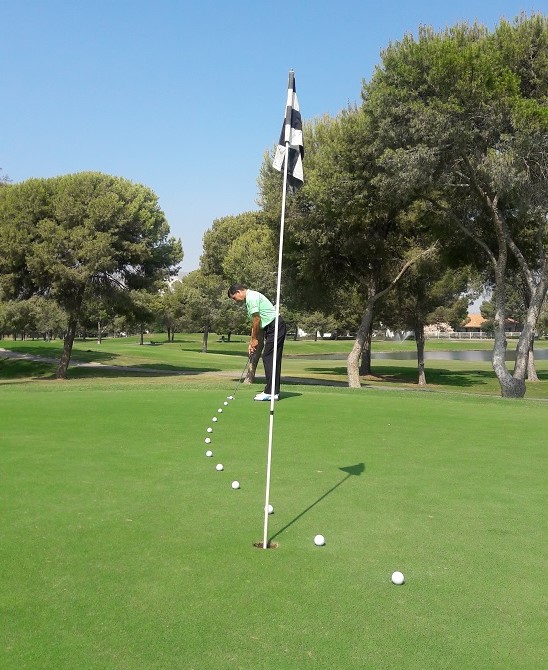
This occurs because:
– The player does not have the foresight to take the break enough.
– The player underestimates the slope of the green.
– The player focuses on the hole instead of the target line.
– The player has a natural tendency to shoot towards the hole.
– The player reorients his alignment and the aim of the face of the putter towards the hole.
– The player makes the practice swings facing the hole instead of the starting line.
– When the player stands before the ball after the practice swings, he does not know whether to aim at the starting line or the hole or a point between the two.
– The player tries to direct the ball to the hole.
– The player does not have the confidence to aim outside the hole, even knowing that the putt has a break.
– The player does not commit to the break he saw.
– The player changes speed and direction without realizing it.
– The player does not hit the ball with enough force.
– The impact is not with the sweet spot.
– The ball is not speeding enough.
Some consider that missing on the high side or the low side is the same because, in the end, it is a missed putt. In that sense, they are right but keeping the ball on the high side increases the chances that the ball will be holed because gravity can pull it into the hole. On the other hand, a ball that has already fallen to the low side of the hole will generally no longer up.
Let’s look at some basics for keeping the ball on the high side of the break and about putts with break:
– The optimal trajectory for holed a putt with a break is generally higher than what most amateurs consider.
– Keep the ball on the high side of the hole, called the pro side.
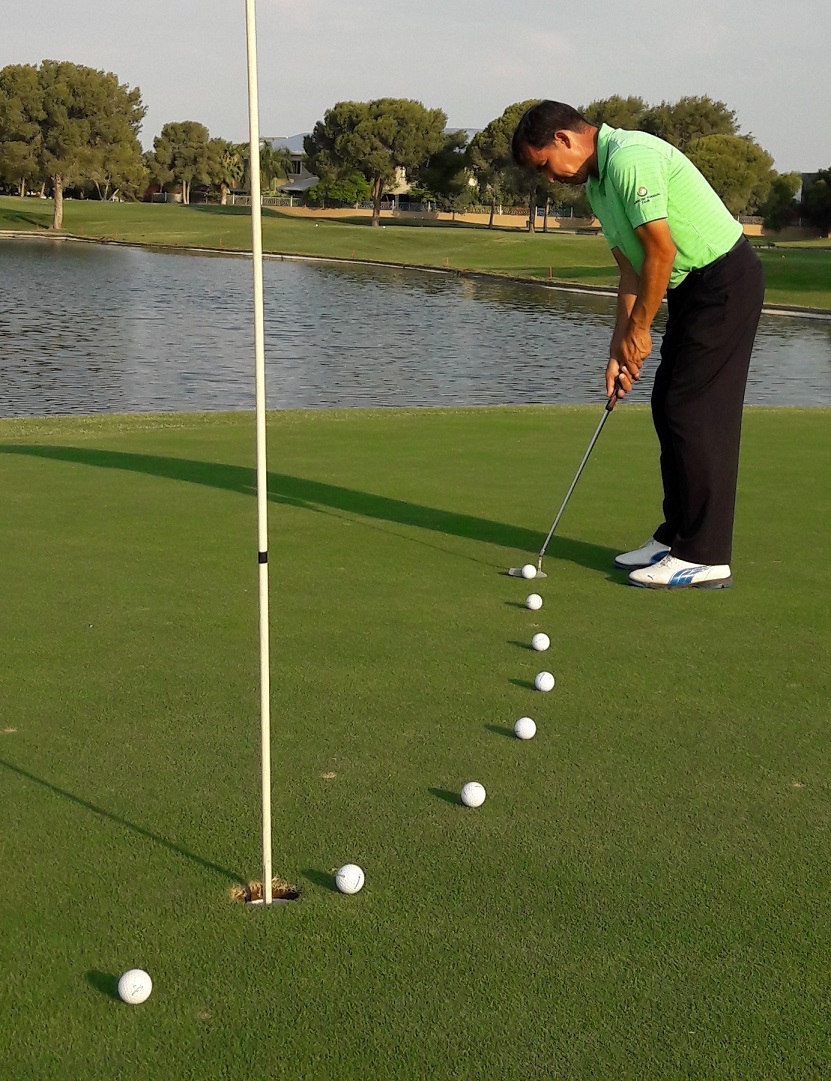
– Make sure that the ball does not fall low side before reaching the hole.
– Depending on the break, the center of the hole changes. For example, if a putt breaks from left to right, considering that the center of the hole is represented by 6 o’clock on a clock, the ball should enter at 7 or 8 o’clock.
– Try to hole by the high side of the hole. That way, the hole seems bigger.
– Do not try to hole through the center of the hole; that way, you only have half of the hole to hole.
– Play to the maximum amount of break, especially on fast greens. In this way, you can putt as smoothly as possible.
– The harder the speed of the ball, it will have less break.
– The softer the speed of the ball, it will have more break.
Applying these concepts will allow you to hole more putts, and if you miss the ball, it will end up closer to the hole.
Irons. It is well known that the condition of its greens evaluates a golf course. In addition to the green’s characteristics, players also assess the details related to the hole. The green may be in excellent condition, but if the hole is worn, raised, in a challenging position, in the same place as three days ago, close to another old hole, etc., this will significantly impact player satisfaction.
There are several topics to discuss the hole, but this time we will talk about the frequency with which the holes are changed. Some years ago, I learned an essential lesson when I worked at El Molino, a club in León, Guanajuato. Rubén Robles, the greenkeeper, changed the holes on the putting green twice a week. I told him that I didn’t think it was necessary and that it was a waste of time to do it often. Rubén taught me that he prevented them from wearing off the edges by changing the holes every week.
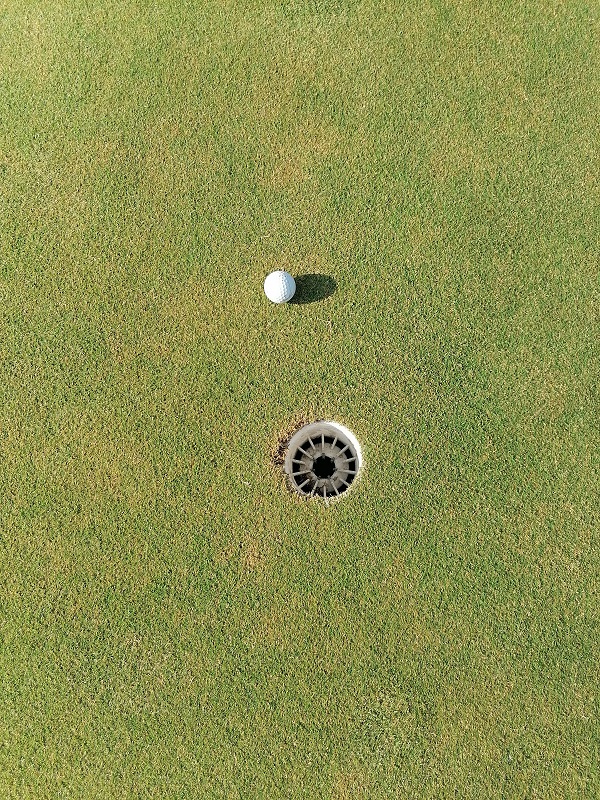
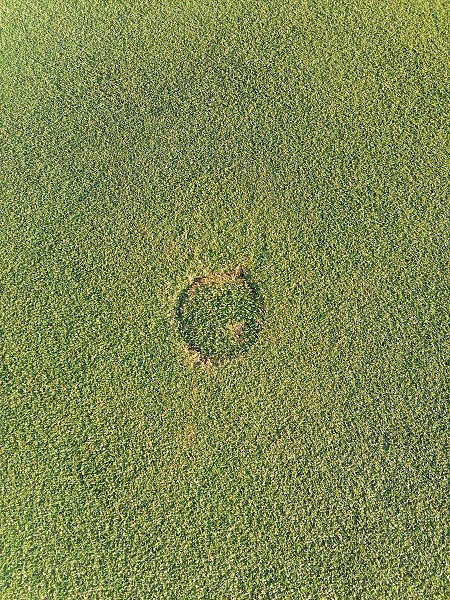
So, when the old hole was filled, it was left without the characteristic ring. The worker who changed the holes did an excellent job. Also, he cleaned the cup leaving it as if it were new. It became clear to me that it is better to change holes more often.
In most golf clubs in Mexico, the frequency with which holes are changed is based on the executives’ decision on duty. If the executives say one, two, or three times a week, it is done as they say. The problem is that executives often decide based on their interests, particularly the days they play.
Let’s look at the factors that need to be considered in determining how often holes are changed:
The number of players. If a golf course has few players, the holes can be changed once or twice a week. If the golf course has a lot of attendance on weekends, the holes can be changed 2 or 3 times, from Friday to Sunday. If the golf course is well attended on a specific weekday and from Friday to Sunday, the holes can be changed 3 to 4 times. Attention to the number of players is the essential factor in determining the frequency of hole rotation.
The condition of the hole. There are holes with very sharp and firm edges. There are also holes whose edges easily collapse because they are very fragile. This difference is due to the type of grass and the maintenance it is given. Ideally, the surface is firm so that the edges resist more. If the edges are brittle, the rotation frequency will be higher because the hole will be worn out in a day or two.
The size of the greens. If the greens are large, you can have more hole positions, which allows you to change the holes more frequently. If the greens are small, there are fewer hole positions, so the holes should be changed less often.
The maintenance staff. Some clubs are staffed enough to change holes several times a week. Other clubs do not. If the club has enough staff, the holes should be changed with the commented frequency according to the players’ number. If the club does not have enough staff, priority should be given to the day with the highest attendance. It is recommended that several workers know how to make the change of holes. That way, a person can be assigned for every nine holes, and when the workers are not there, there is someone who can do that job.
Based on these factors, it may be that your Club is changing holes too often or not enough. Some additional comments on the subject:
Who changes the holes? In some clubs, it is done by the course maintenance staff and in others by the golf staff, either the Marshal or a pro assistant. In my opinion, this work corresponds to the maintenance staff.
It is advisable to have at least three hole changers (the tool). Two for normal use, and one for reserve when one fails.
Personnel operating mowers and rollers must be careful when removing and placing the flagstick, as they often damage the hole.
The edges of the holes should be checked daily. It must be done by the Marshal and the person who mowed the green. If necessary, they should refine the edges, and in more serious cases it will be necessary to change the hole.
LoPutts. When a player hits from the teeing area and his stroke is probably OB, it is common for him to want to hit a provisional ball immediately, but Rule 6.4c indicates that “the order of play in this case is for all other players in the group to make their first stroke on the hole before the player plays the provisional ball or another ball from the teeing area.” That is, whoever is going to play a provisional ball must wait for the other players to hit their first stroke.
In the same situation of playing a provisional ball, some hit the provisional ball. Even in a gesture of honesty, others say that the first ball is of a particular brand and number, and the one they are going to hit is of a specific brand and number. Let’s see what the Rules say about it:
Rule 18.3b says “before the stroke is made, the player must announce that he or she is going to play a provisional ball:
o It is not enough for the player only to say that he or she is playing another ball or is playing again.
o The player must use the word “provisional” or otherwise clearly indicate that he or she is playing the ball provisionally under Rule 18.3.
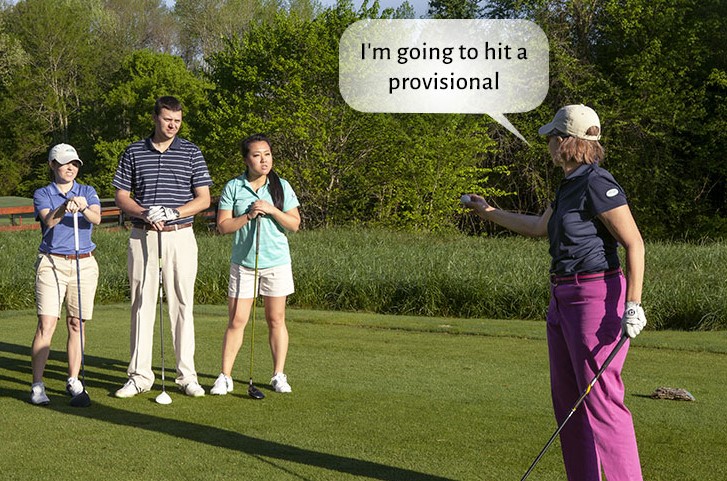
If the player does not announce this (even if he or she intended to play a provisional ball) and plays a ball from where the previous stroke was made, that ball is the player’s ball in play under penalty of stroke and distance (see Rule 18.1)”.
Interpretation 18.3b/1 says “What is considered announcement of provisional ball. Although Rule 18.3b does not specify to whom the announcement of a provisional ball must be made, an announcement must be made so that people in the vicinity of the player can hear it.
For example, with other people nearby, if a player states that he or she will be playing a provisional ball but does so in a way that only he or she can hear it, this does not satisfy the requirement in Rule 18.3b that the player must “announce” that he or she is going to play a provisional ball. Any ball played in these circumstances becomes the player’s ball in play under penalty of stroke and distance.
If there are no other people nearby to hear the player’s announcement (such as when a player has returned to the teeing area after briefly searching for his or her ball), the player is considered to have correctly announced that he or she has the intent to play a provisional ball provided that he or she informs someone of that when it becomes possible to do so.”
Interpretation 18.3b/2 says “Statements that “clearly indicate” that a provisional ball is being played. When playing a provisional ball, it is best if the player uses the word “provisional” in his or her announcement. However, other statements that make it clear that the player’s intent is to play a provisional ball are acceptable.
Examples of announcements that clearly indicate the player is playing a provisional ball include:
o “I’m playing a ball under Rule 18.3.”
o “I’m going to play another just in case.”
Examples of announcements that do not clearly indicate the player is playing a provisional ball and mean that the player would be putting a ball into play under stroke and distance include:
o “I’m going to re-load.”
o “I’m going to play another”.
Knowing the Rules helps you act properly and avoid penalties. FORE.
